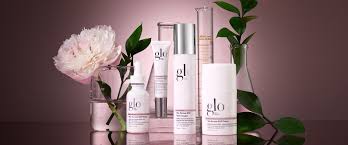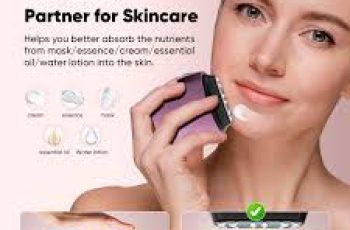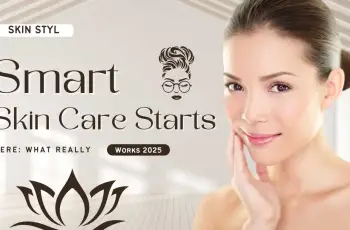
Epidermal Growth Factor in Skin Care: Is It Really Safe? Why We Aren’t Sure
The skincare world is buzzing about Epidermal Growth Factor, or EGF. Many high-end serums claim it can reverse aging and boost skin renewal.
But is it truly safe? Let’s explore what EGF is, how it works, and the safety concerns.
What is Epidermal Growth Factor (EGF)?
Epidermal Growth Factor (EGF) is part of a family of proteins known as growth factors. These small proteins share similar structures and bind to the same receptors in the skin to trigger biological activity.
The EGF family includes four different proteins, each performing similar roles.
But in skincare, we mostly focus on Epidermal-Derived Growth Factor and its interaction with the epidermal growth factor receptor (EGFR).
How Does Epidermal Growth Factor Work?
EGF is a key player in cell growth and regeneration. It promotes the proliferation and movement of keratinocytes, which are the primary cells in the epidermis.
It also stimulates fibroblasts, the cells responsible for producing collagen and other extracellular matrix components.
Beyond these, EGF helps regulate hair growth, influences the development of sebaceous (oil) and sweat glands, and even boosts the skin’s hyaluronic acid production, essential for moisture retention.
One of the most exciting features of EGF is its ability to enhance wound healing. These combined effects make EGF a coveted ingredient in many anti-aging and skin-repair products.
The Epidermal Growth Factor Receptor (EGFR): What Is It?
EGFR is a specialized protein found mostly on cells in the basal layer of the epidermis and the hair follicle’s outer root sheath.
It sits on the cell surface and binds to growth factors like EGF to trigger internal cell signals.
Several natural ligands (molecules that bind receptors) can activate EGFR, including amphiregulin, betacellulin, epiregulin, and transforming growth factor-alpha (TGF-α).
Interestingly, ultraviolet (UV) radiation from the sun can also activate EGFR, which has important implications for skin aging and damage.
What Happens When EGFR Is Activated?
When EGF or another ligand binds to EGFR, a signaling cascade begins inside the cell. This involves tyrosine kinase enzymes, which activate various pathways controlling cell behavior.
These pathways regulate crucial processes like cell proliferation, differentiation, cellular aging (senescence), and programmed cell death (apoptosis).
EGFR activation increases calcium levels inside cells and promotes DNA synthesis.
The result? More keratinocyte growth and movement, increased fibroblast activity, and changes in the skin barrier function. This explains why EGF can potentially stimulate skin regeneration.
But Here’s a Catch: UV-Induced EGFR Activation
UV light triggers EGFR in a way that reduces apoptosis, the natural elimination of damaged cells. This means more senescent cells—old, dysfunctional cells that accumulate and contribute to skin aging.
Many skincare products aim to reduce these senescent cells through autophagy, the body’s cleanup process, because their buildup is linked to wrinkles, dullness, and decreased skin function.
EGF in Serums: Popular But Not Without Questions
Many anti-aging serums feature EGF as their star ingredient. The rationale is simple: EGF encourages skin renewal and hydration, making skin appear plumper and younger.
Some products also include ingredients that boost natural EGF production in the skin.
On the flip side, there are skincare ingredients that inhibit EGF signaling, which might sound counterintuitive but could protect the skin from excessive cell growth.
EGF Inhibitors: The Other Side of the Coin
Certain natural compounds block EGFR activity and are used in skincare to control abnormal skin cell growth. These include genistein, quercetin, daidzein, and glycitein—all plant-derived molecules.
Research shows these inhibitors can reduce excessive keratinocyte proliferation, especially helpful in conditions with skin irritation or over-exfoliation. They may help maintain skin balance and reduce scaling.
Natural and Plant-Derived EGFs: Are They Safer?
Some skincare brands promote plant or fungus-derived EGF-like ingredients such as phytosphingosine-1-phosphate (PhS1P).
While these sound natural, it’s important to realize their safety profile isn’t necessarily better than human-derived EGF.
They still stimulate EGFR and trigger similar biological effects. The “natural” label doesn’t guarantee safety or reduced risk when it comes to growth factor activation.
The Safety Debate: Why Are Experts Unsure?
One of the biggest safety concerns is that stimulating EGFR might encourage the growth of harmful or mutated cells.
Since uncontrolled cell proliferation can lead to cancer, any ingredient activating this pathway raises red flags.
In fact, EGFR inhibitors are used in cancer therapies to slow down tumor growth. If blocking EGFR slows cancer, could activating it encourage abnormal growth?
EGFR Inhibitors in Medicine and Their Side Effects
Drugs that suppress EGFR treat certain cancers like small cell lung cancer and some skin malignancies.
However, systemic EGFR inhibition often causes side effects such as skin inflammation, acne-like eruptions, dryness, changes in hair and nail growth, and folliculitis.
These side effects reflect how critical EGFR signaling is for normal skin and hair functions. Altering this pathway too much—whether inhibiting or stimulating—can disrupt skin health.
So, Is EGF in Skincare Safe?
Truthfully, we don’t know for sure. EGF definitely affects multiple cellular pathways in the skin. The concern is that chronic stimulation could promote unwanted cell growth or increase skin cancer risk.
However, topical EGF’s ability to penetrate the skin barrier is limited. This may explain the lack of reported skin cancers linked directly to EGF serum use.
More long-term studies are needed to truly assess safety. Until then, caution and moderation are wise.
What Should Consumers Know?
EGF can boost skin renewal, hydration, and wound healing, making it attractive for anti-aging products.
EGFR activation is complex, impacting cell growth, aging, and skin barrier function.
UV light activates EGFR in a way linked to skin aging and increased senescent cells.
EGFR inhibitors exist in nature and medicine and are used to curb excessive cell proliferation.
Plant-derived EGFs are not necessarily safer than human-derived ones.
The long-term safety of topical EGF remains uncertain due to its cell growth effects.
Final Thoughts: The Promise and Peril of EGF in Skincare
EGF offers exciting potential for skin rejuvenation, but it operates on a delicate balance. The same pathways that help skin heal and regenerate can, if overstimulated, lead to harmful cell behavior.
For now, those considering EGF serums should weigh the benefits and unknown risks. Consulting a dermatologist can help tailor choices based on individual skin type and health.
Science is evolving, and future research will hopefully clarify EGF’s role and safety in skincare. Until then, a cautious approach is best when using powerful growth factors on your skin.


